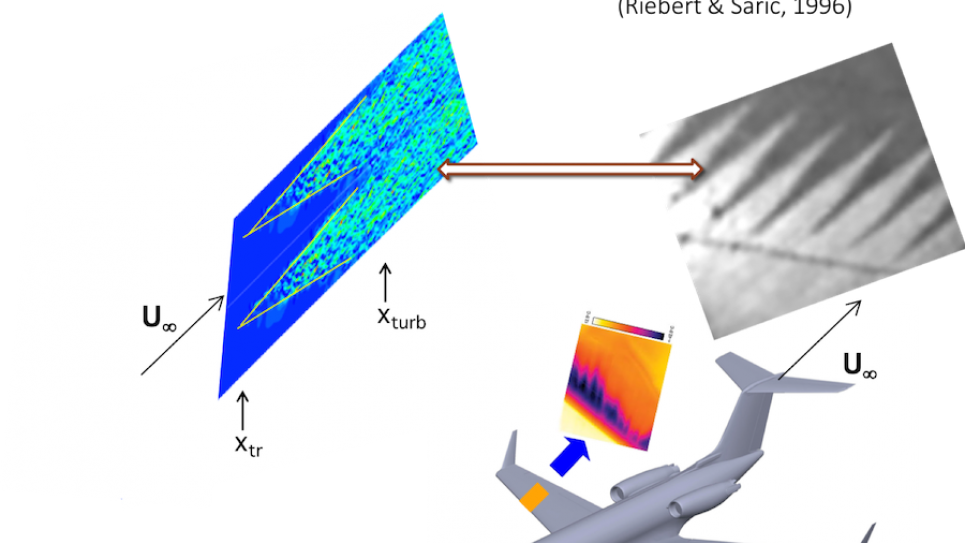
Laminar-Turbulent Transition in Swept-Wing Boundary Layers
Skin-friction drag accounts for approximately one half of the total drag for long-haul transport aircraft. Due to the substantial increase in drag in the course of laminar-turbulent transition, delay of crossflow-influenced transition in swept-wing boundary layers via laminar flow technology is a leading contender for reducing the aircraft fuel burn.
This project harnesses the computational power of Mira to enable petascale direct numerical simulations of the entire crossflow transition process—from the laminar regime through transition to the fully turbulent regime—over a transonic natural-laminar-flow wing at high chord Reynolds numbers relevant to the transport aircraft. In particular, the work will focus on generating a detailed knowledge base that will address the existing gaps in crossflow transition prediction, including (1) the excitation and control of crossflow instabilities via discrete roughness elements (DREs), and (2) the laminar breakdown of crossflow vortices preceding the onset of turbulent flow and the properties of developed turbulence in the post-transitional region.
This project will significantly advance our ability to predict and control laminar-turbulent transition in three-dimensional boundary layers. It will also help delineate the limitations of the current prediction tools, providing a basis to develop alternate models for cases in which those tools are either inapplicable or lead to unacceptable predictive errors. Beyond aerospace engineering, this work will more broadly impact the design of devices involving three-dimensional transitional and turbulent boundary layers, such as turbomachinery and wind turbines.